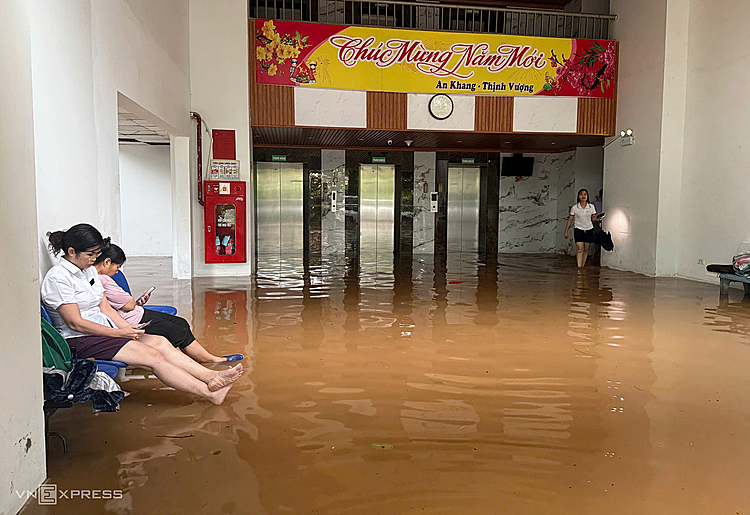From the night of 25/8 to the morning of 26/8, Hanoi experienced heavy rainfall that overwhelmed the city's drainage system. The resulting floods, particularly severe in areas with inadequate infrastructure, inundated markets and homes, paralyzed traffic, and disrupted daily life for hours.
Experts warn that the damp environment following floods creates ideal conditions for pathogens to thrive and spread. Dr. Nguyen Tien Thanh, a member of the Vietnam Dermatology Association, identified contact dermatitis and fungal infections as the two most common post-flood ailments. Prolonged exposure to contaminated floodwater weakens the skin's natural barrier, allowing irritants and allergens to penetrate, causing redness, blisters, burning, and itching.
Fungal skin infections, especially on the feet, groin, armpits, and back, are characterized by redness, itching, scaling, and small blisters. A common mistake is self-medicating with corticosteroids, which may temporarily mask the symptoms but ultimately worsen the infection and make treatment more difficult.
During post-flood cleanup, injuries from impacts or falls are common. When wounds come into contact with contaminated water, bacteria can cause serious infections like cellulitis, necrosis, or sepsis. The post-flood environment also fosters the proliferation of mosquitoes, ants, and fleas, whose bites can cause discomfort, allergies, or infections.
Dr. Vu Minh Dien from the National Hospital of Tropical Diseases warns of the high risk of water and food contamination from sewage-borne pathogens, posing a particular threat to the elderly, children, and those with chronic illnesses.
Children, with their weaker immune systems, are especially vulnerable to respiratory illnesses after prolonged exposure to cold and inadequate nutrition. Common illnesses include influenza, acute pharyngitis, tonsillitis, bronchopneumonia, and respiratory syncytial virus (RSV) infection.
Gastrointestinal diseases like cholera, dysentery, typhoid, and bacterial diarrhea are also likely to increase. Severe diarrhea can lead to dangerous complications like dehydration, electrolyte imbalance, hypotension, circulatory collapse, and multiple organ failure.
The humid conditions after flooding provide an ideal breeding ground for disease vectors like mosquito larvae, increasing the risk of dengue fever.
 |
A building in Hanoi heavily flooded, with water reaching the elevator. Photo: Viet Tuan |
A building in Hanoi heavily flooded, with water reaching the elevator. Photo: Viet Tuan
To protect their health, residents should take preventative measures. For respiratory health, keep the throat warm and gargle with salt water or antiseptic solution. Following the principle of "eating cooked food and drinking boiled water" and ensuring clean water sources is crucial for preventing digestive illnesses.
After contact with floodwater, wash thoroughly with clean water, dry the entire body, paying special attention to areas between the fingers and toes. Avoid prolonged contact between damp clothing and skin, as this promotes fungal growth.
Experts strongly advise against using strong corticosteroids without a proper diagnosis, as this can worsen the condition and mask the actual symptoms. Report any digestive issues like vomiting or diarrhea to local health facilities immediately.
Maintain environmental hygiene, spray insecticide, cover rainwater tanks, eliminate stagnant water in tires, flower vases, and fish tanks, and use mosquito nets while sleeping.
Thuy Quynh












